Kicking it Up at the Murghab Horse Festival
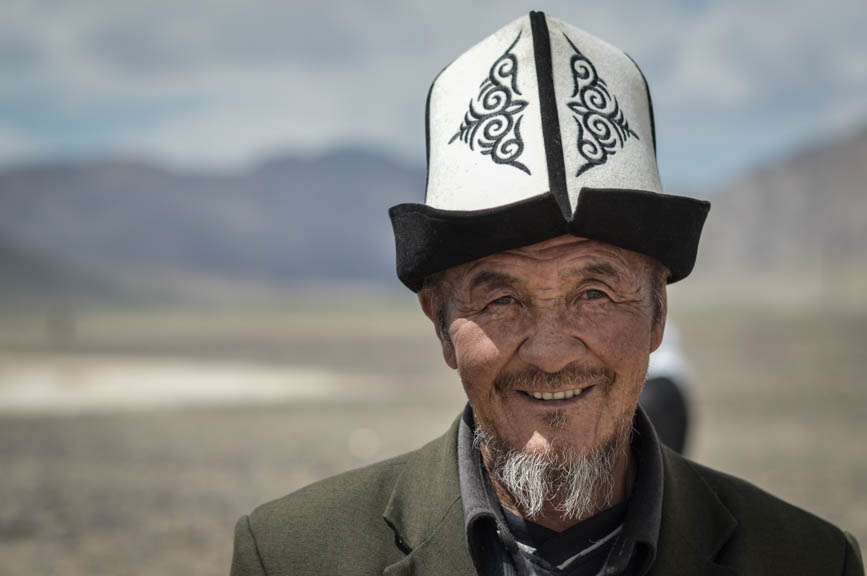
Metallic horse hooves pound the tundra as dust particles vibrate into the crisp air. Crowds have gathered patiently in a vast plateau surrounded by dramatic lunar peaks. At the edge, electric towers set up a barrier, barely holding up cascading wires; the rods occasionally setting off loud twangs with sparks as a surcharge goes through towards the highest town in the former Soviet Union – Murghab.
At 3650m, Murghab looks over a wind-swept steppe, a place seemingly forgotten by most of the world in the Gordo-Badahkshan region of Tajikistan. Meaning “prairie river” in persian, this town of 4000 inhabitants is notorious for its role as an illicit drug trading outpost, strategically located on the distribution route between China, Afghanistan and Tajikistan.
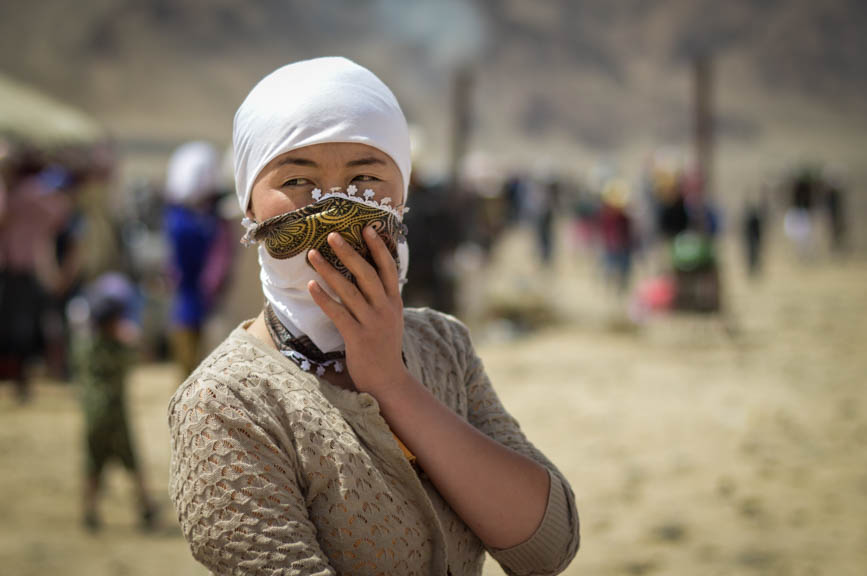
But on this August weekend, locals and outsiders alike have flocked to this isolated plain to celebrate the Kyrgyz horse. Colourful Russian Ladas and cranky Mitsubishi Pajeros line up side by side to form a natural gate entrance to the main event. A loose congregation walks towards the clearly demarcated track, plastic candy-striped bands welcoming you to what seems like a set up for an illegal car-racing game. Only this time, the horse power is actually fuelled by the dry grass of the Pamirs.
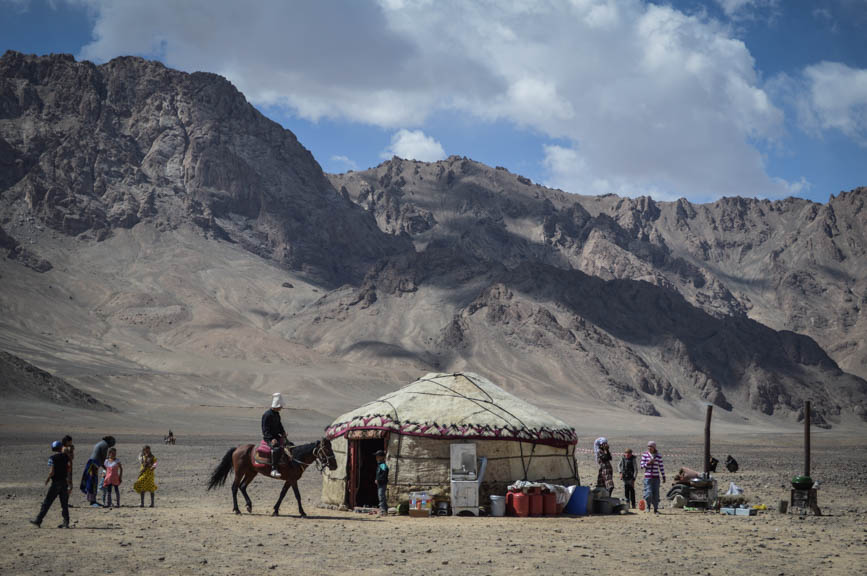
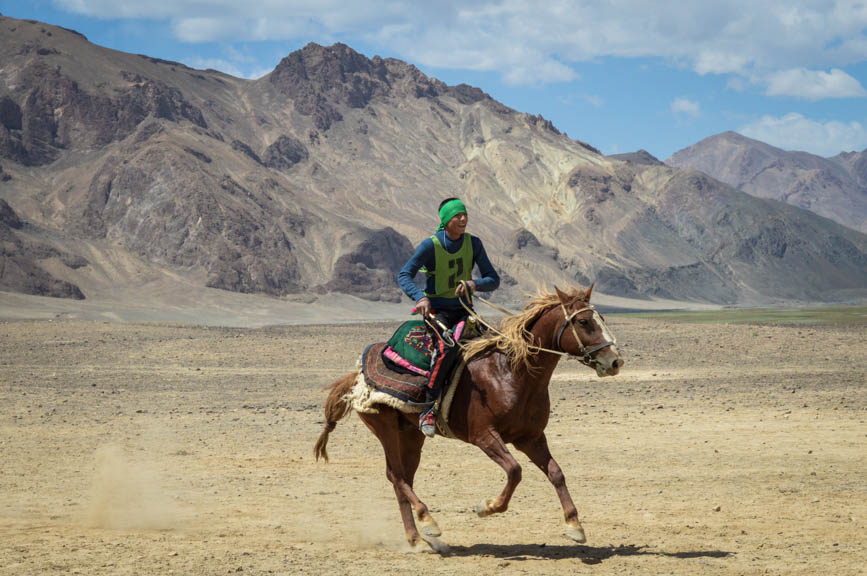
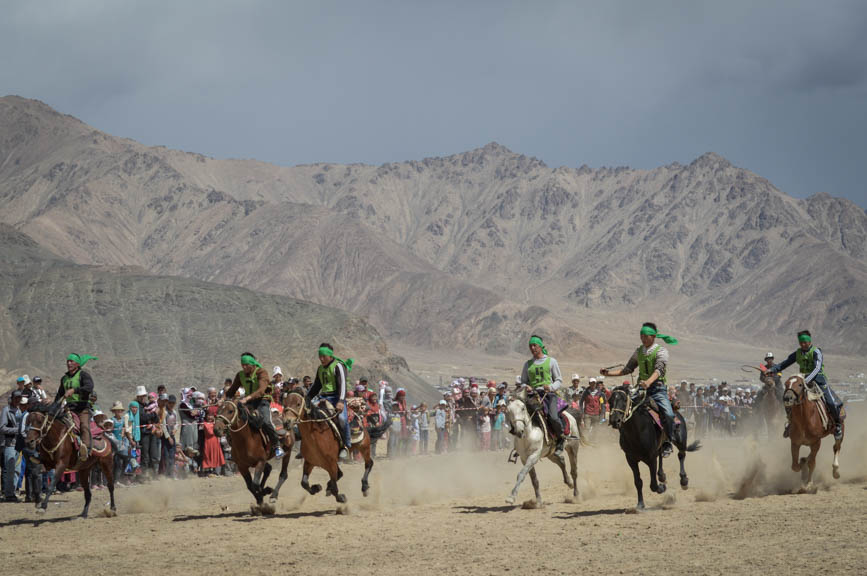
At this altitude, the oxygen is thin and the red-cheeked crowd emits a collective cheer. Traditional white kalpak hats bob in unison as male heads turn to get a better look of the first riders. The women hold up their scarves as the cloud of dust approaches, the emerald green bandanas of the horsemen barely visible through it.
The “At Chabysh” Festival, also referred to as the Murghab Horse Festival has commenced. Organized yearly by the French Embassy, the Christensen Fund and the Foundation Kyrgyz Ate, the gathering celebrates Kyrgyz horsemanship and traditional sports.
Six horses rush towards the back of a nearby hill and disappear for what feels like a very long time, provoking my suspicions that they are deciding who the winner should be. Perhaps a little çay break while we fix the match? It gets hotter as the sun rises and everyone shuffles around, positioning themselves for the best view of the victor. In the horizon, a spot steadily bounces, as everyone tries to make out the number on the green jersey. Ironically number one arrives first, the black stallion beating out the rest.
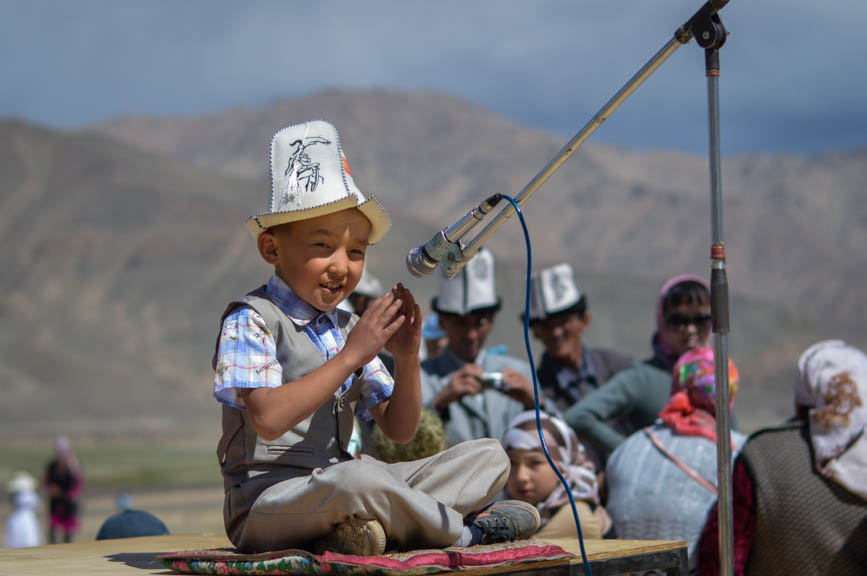
Having whet the public’s appetite with the opening race, the organizers were not about to serve up everyone’s favourite games on a silver platter, you were going to have to wait for the best part. Luckily there was a child dolled up in his sunday-best ready to seduce the crowd with non-horse related entertainment. Unfortunately, he is quickly replaced by a baseball-capped man who begins to belt out karaoke tunes seemingly to himself as the crowd looses interest and disperses.
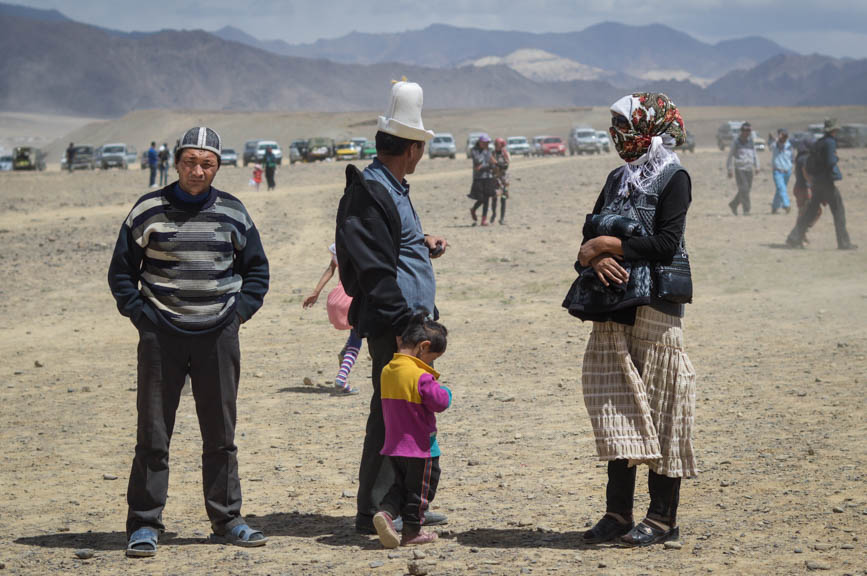


As with all great festivals, there are culinary delights to keep everyone occupied and children happy. They have managed to do the impossible – in what seems like the middle of nowhere, there are queues for soft-serve vanilla ice, sizzling skewers of minced lamb and yurts churning out the Central Asian staples of hot manti and plov.
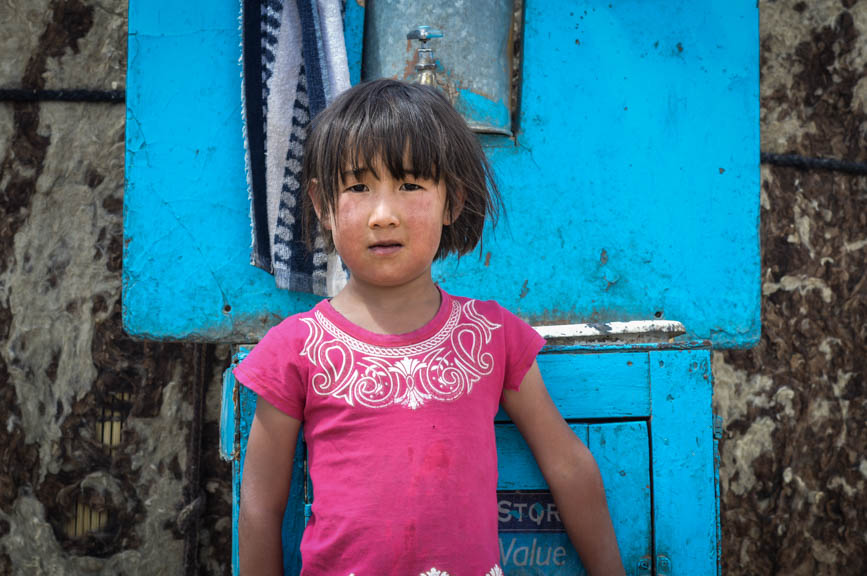
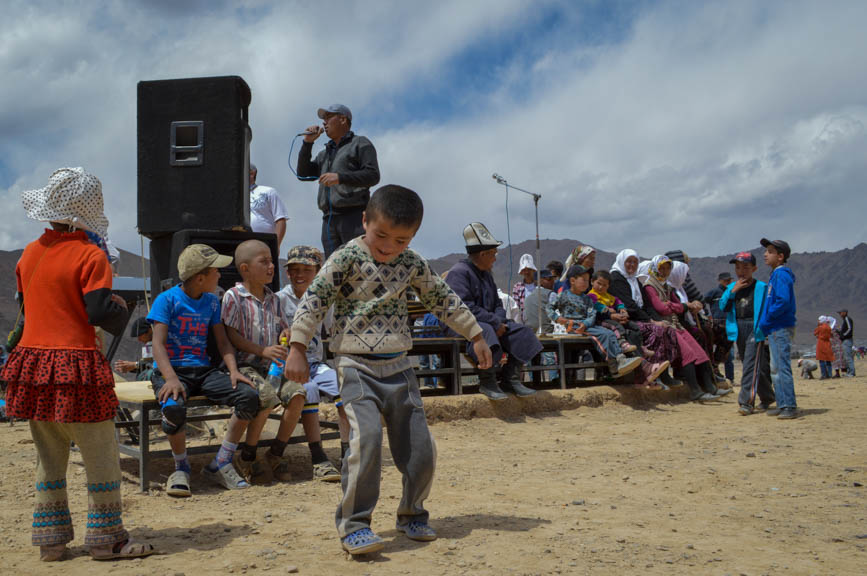
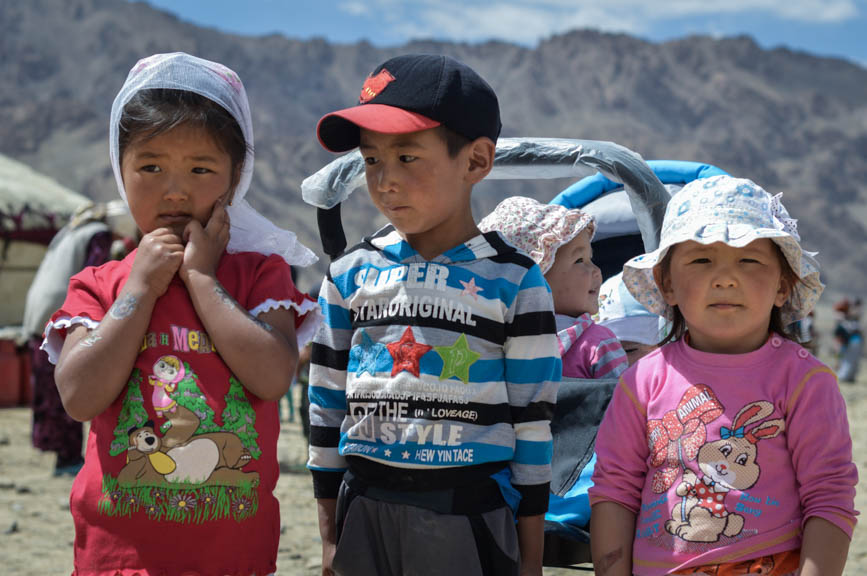
The lunch break provides just as much opportunity for people watching as for eating, older men proudly introduce us their small team of grandchildren, while fashionistas in matching accessories sway by or ride pass on their horse. A mix of the traditional and the modern come to merge in the wild plains.
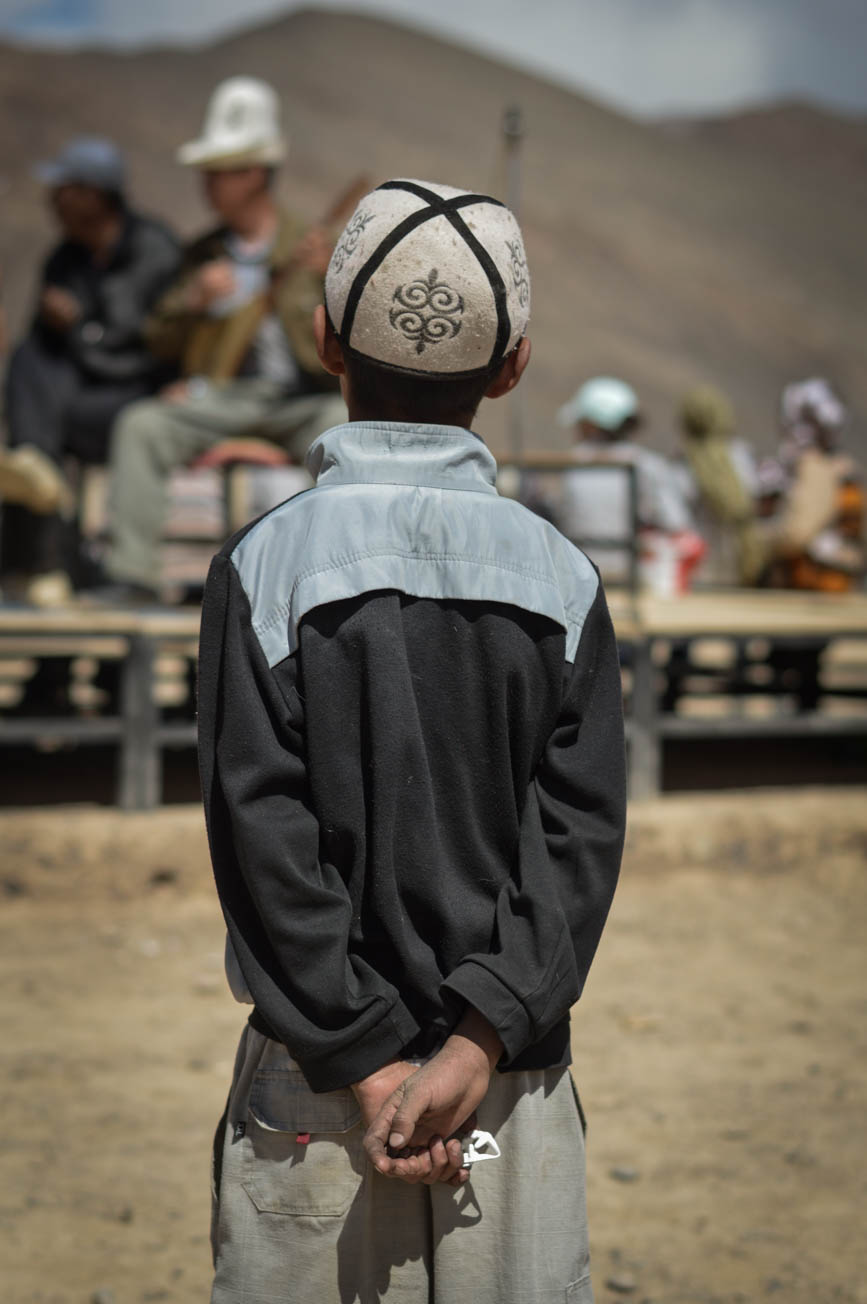
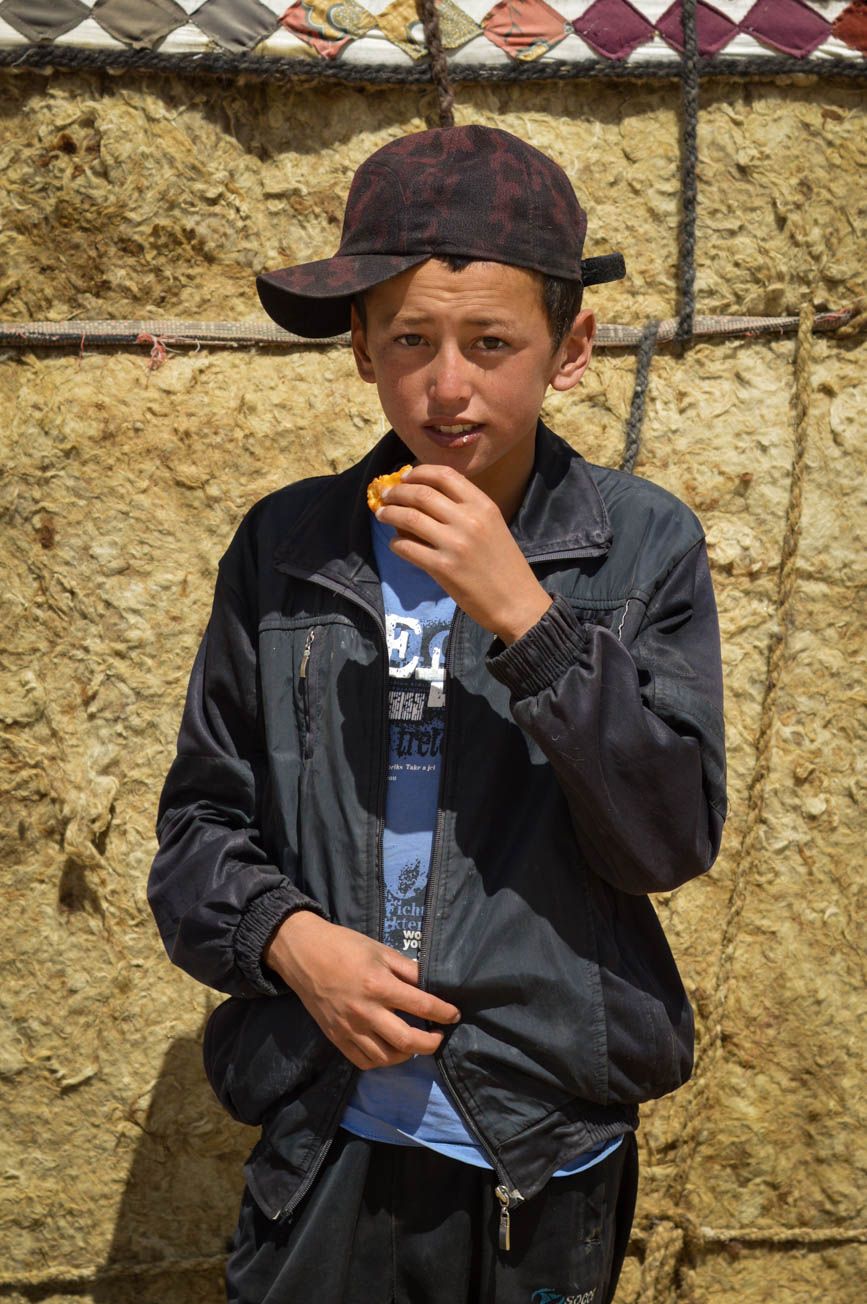
Finally the buzz is back as groups emerge from the yurts towards the racing track as the loudspeakers crackle with the announcement of our first game. Referees are placing little yellow sacks on the ground in preparation for “alsher chiamat”. Competitors race past while loosely hanging off their horse, hands stretching down to grab their canary prize.
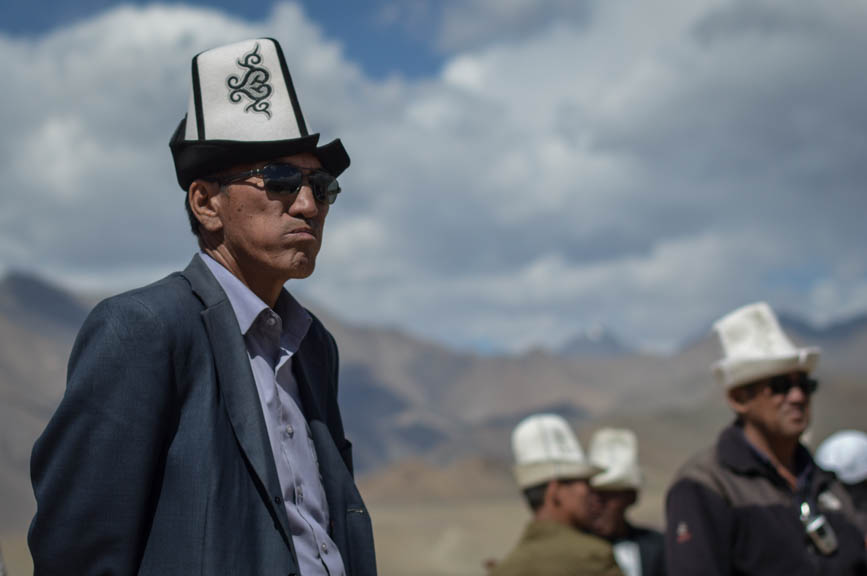

The agility and grace of the riders thrill as you close your eyes from fear that they might slip off and fall, but curiosity keeps you squinting to check how many sacks they have managed to collect.
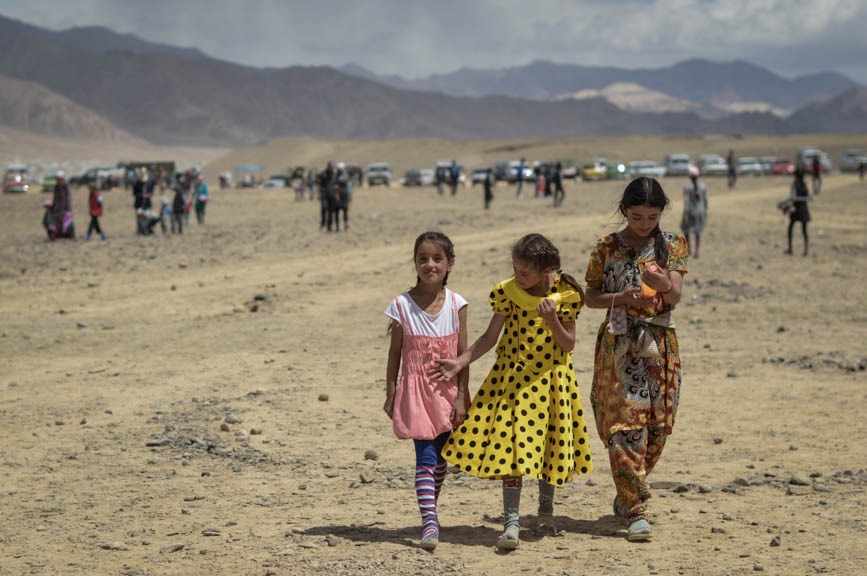
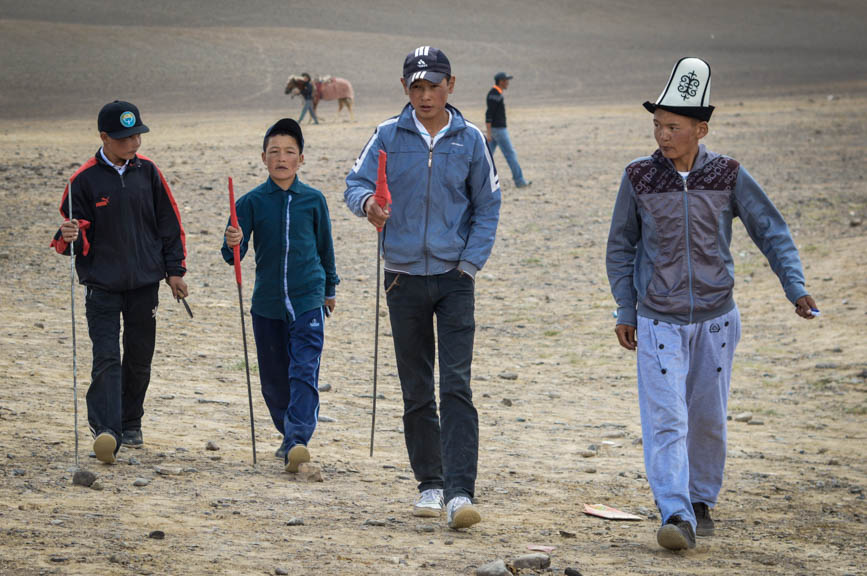
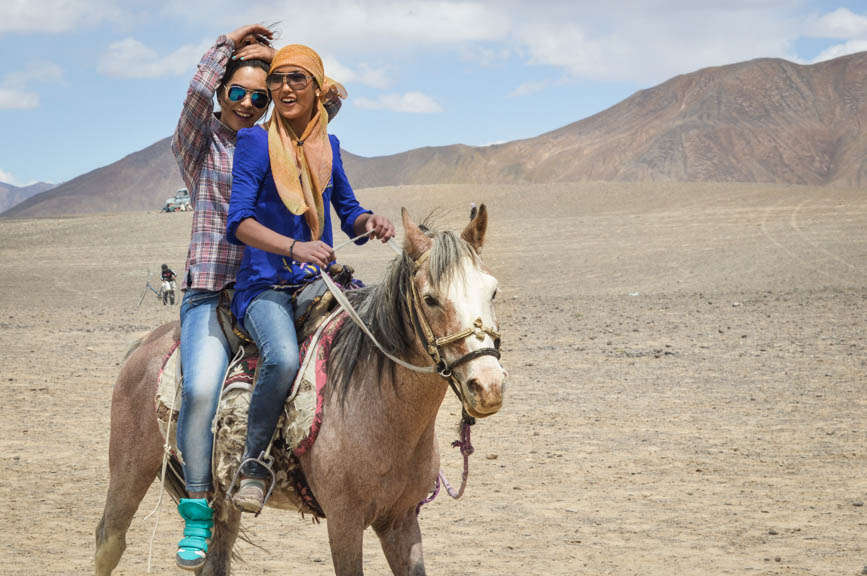
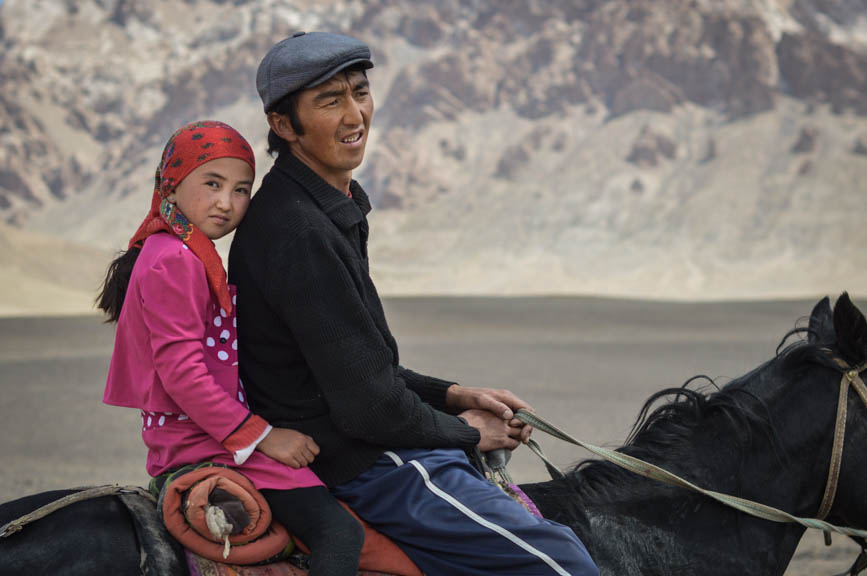
Straight after is perhaps the most macho sport of them all, “tyiym enmei” – wrestling shirtless on the back of a horse. In a display of male prowess, men with exaggerated t-shirt tans and tough cheekbones, hook their arms and torsoes to each other while balancing on the saddles of their kicking steeds.
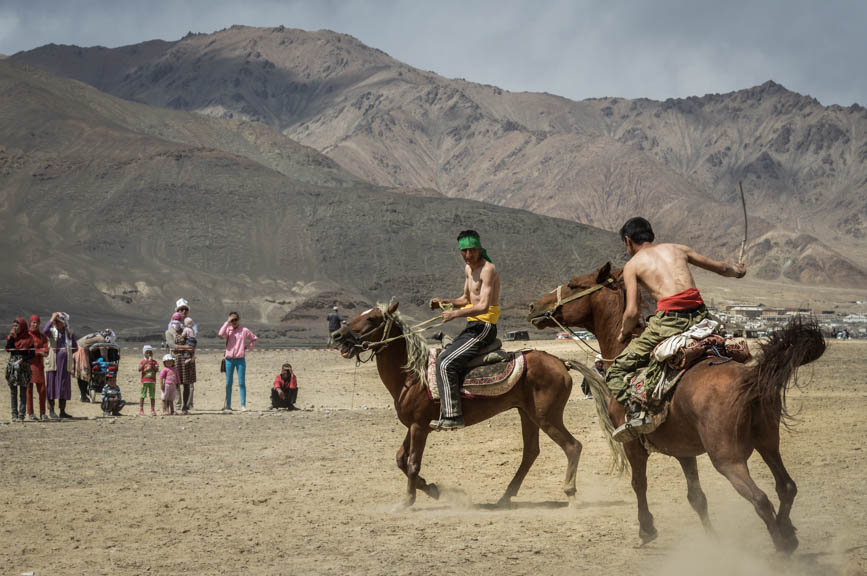
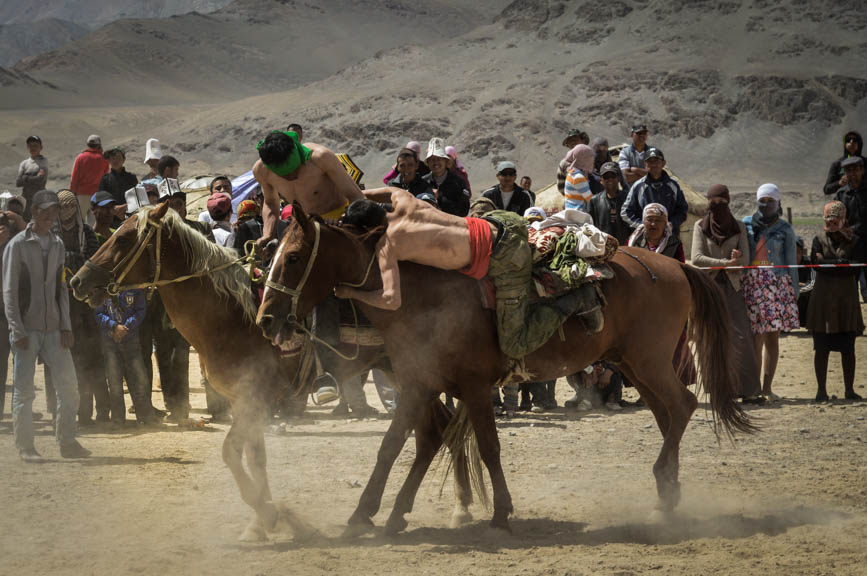
Whips gripped between their teeth, they manoeuvre their horse and bodies until one of them tumbles to the ground. Sometimes swift and dramatic, the referee declares victory, at other times, the grunting and puffing continues until one horse gets tired of the display and decides to shake his master off to get it over with.
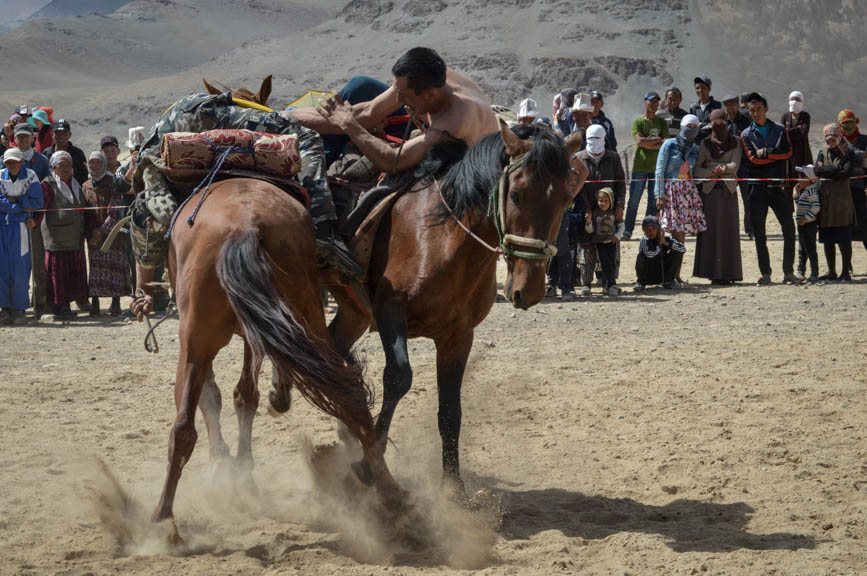
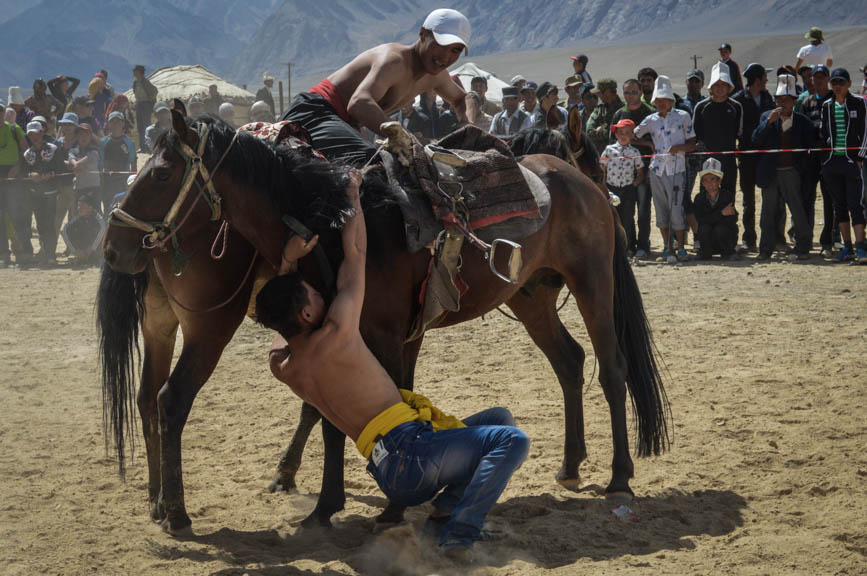
Not to be outdone by men, the grand finale is the “kyz-kuumai” where Kyrgyz women show off their equal skills at dominating their horses and perhaps their men as well. A women decked out in traditional dress sets off at high speed, while a male rider follows, his objective to remove her hat and give her a kiss. Not a single time did we witness a man succeed, the crowd thunders with whistles and applause as she roars past into the open space. It is a moment of celebration and lightness in what is traditionally a more sexually-segregated society.
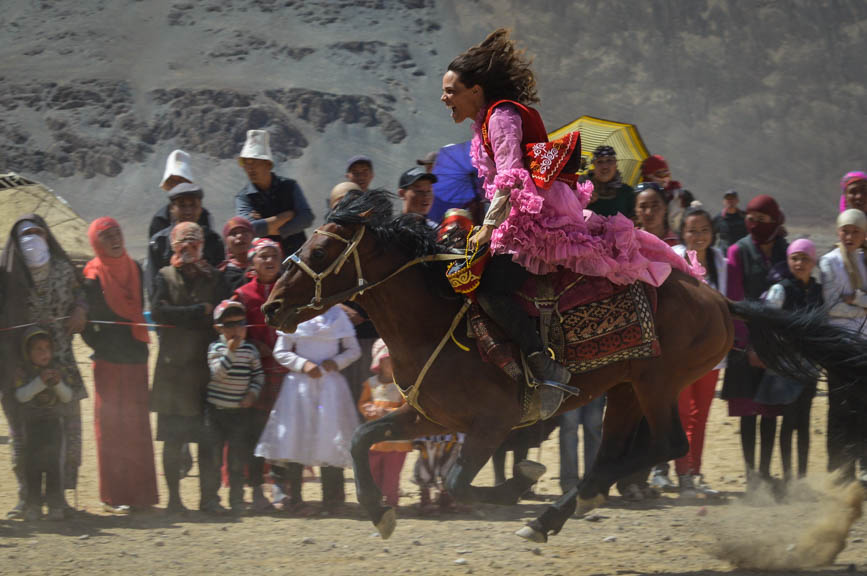
As the crowd thins out at the end of the day, the motley cars clear out one by one and Murghab is quiet once again. Some head to their Pamiri hometowns of Alichur, Khorog and Langar. Others back to their nomadic yurts and we hitch a ride the next day across the border to Kyrgyzstan. Our ears are filled with sand and our faces red from the wind, our hearts still pumping from the frenzy and testosterone. It took us days to get here, through mountain passes and deep ravines, to have a glimpse into the past glory of the Kyrgyz horsemen and it will take us days to reach the glitzy capital of Bishkek, abound with fluorescent miniskirts and foamy cappuccinos.






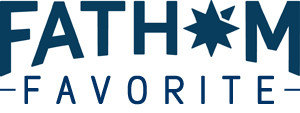
8 Comments
Camilla
September 4, 2014Love the pink dress! Wish I could ride like that. Reminds me of this Tibetan tradition of the groom-to-be fake kidnapping the bride from her family’s home before the wedding.
Jess
September 7, 2014This was fascinating to read. Your blog is definitely making me consider more land journeys, and peaking my interest in Central Asia. Can’t wait to read more.
Nico & Gabi
September 16, 2014Thanks Jess! We are learning a lot travelling by land and seeing things differently. Happy you are tempted by Central Asia, it’s definitely a region worth exploring.
Kicking it up at At Chabysh horse festival in Murghab | Caravanistan
March 2, 2015[…] This post was written by the Funnelogy Channel and first appeared here. […]
Donna Grace
June 23, 2016Through your experience in Tajikistan, murghab-horse-festival – do you know of anyone I could contact, to find out about a certain breed of horse native to Tajikistan – the Lokai horse?
Nico & Gabi
December 20, 2016Hi Donna, sorry we didn’t get back to you sooner, we don’t know someone specific in Tajikistan for that question. However, I think this Kyrgyz Horse Association who helps organize the festival might know – http://www.atchabysh.org/en/uchrezhdenie-kyrgyz-aty/obosnovanie
Hope that helps!
Dominic
December 20, 2016Wow… Not many people ever going to see this place. I will probably never get the chance to visit this country. Thank you for those incredible beautiful candid photographs. I am a bit of a shutterbug myself and love candid street photography. Your photos are just awesome.
Nico & Gabi
December 20, 2016Thanks Dominic, we hope you do get the chance to visit some day…you never know! It is definitely a very special place.